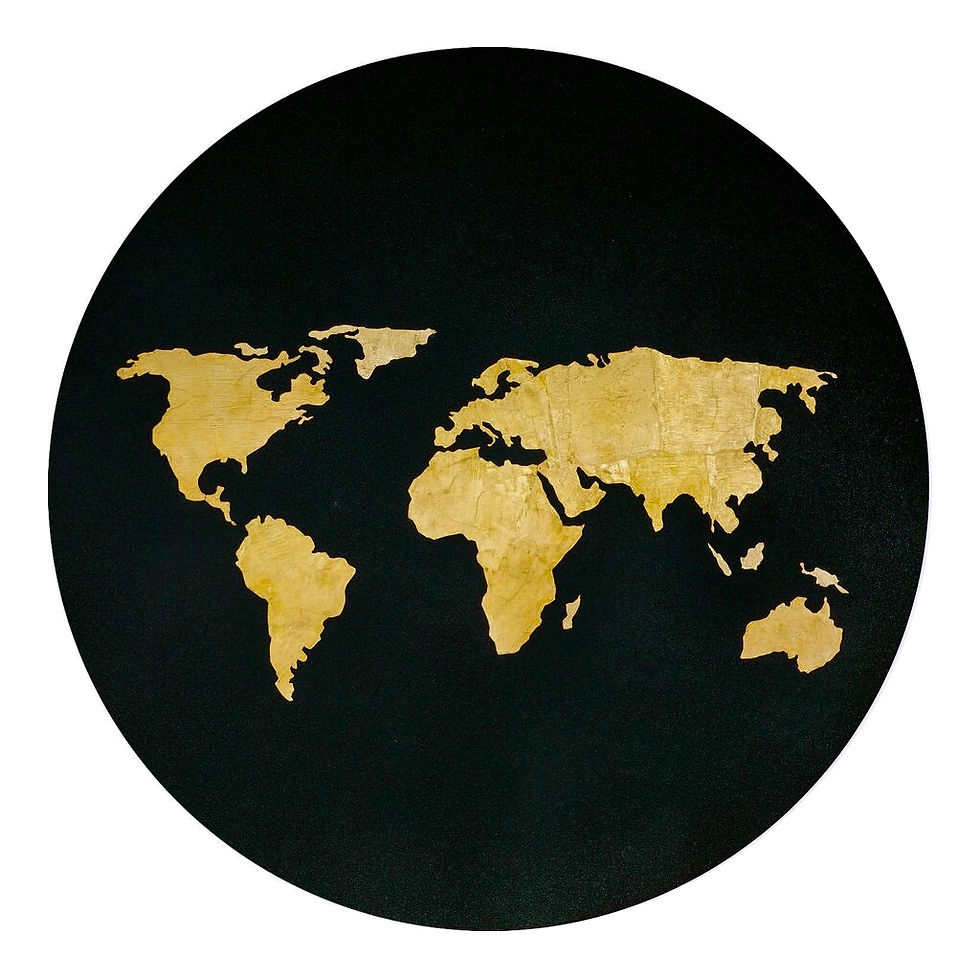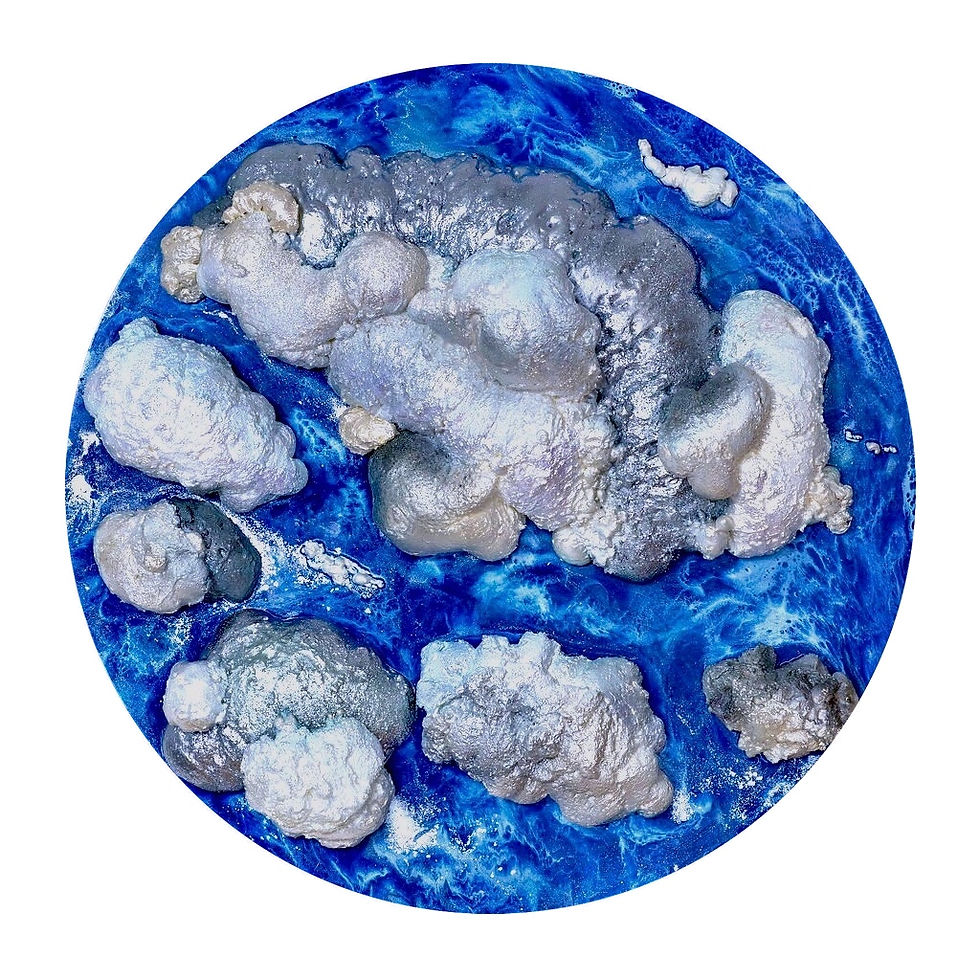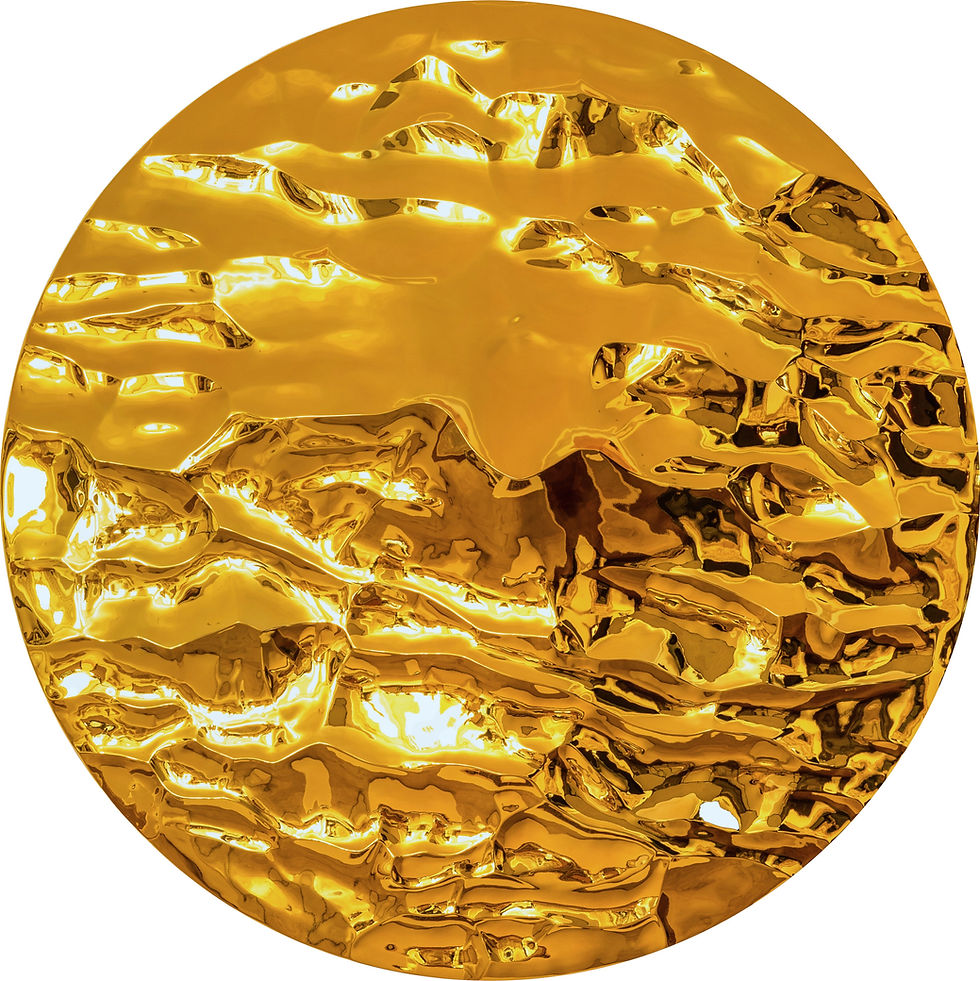INTERVIEW WITH NATALIA KAPCHUK - ART AMBASSADOR FOR THE PARLIAMENTARY SOCIETY (UK)
- PARLIAMENT NEWS

- Sep 6, 2021
- 9 min read
Updated: Sep 7, 2021

In partnership with Parliamentary Society Magazine, we sat down with London based artist Natalia Kapchuk to discuss her upcoming solo exhibition. An artist specializing in mixed media, Natalia Kapchuk is an ambassador here at The Parliamentary Society of Arts, Fashion and Sports (UK), as well as, an ambassador for the Better World Fund (BWF) and a philanthropist, supporting charities and organizations dedicated to protecting nature and the oceans of the world. Creating environmentally centered artworks, Kapchuk highlights many ecological problems facing the world we see today.
1) Natalia, how did the UK become a source for your artistic creativity? What has life here in London brought to your works and how did it affect your creative process?
Wow, where do I even begin. From its rich history and architecture, to the diversity of the city’s people and cultures, London has always been a place of inspiration for me. Being the capital and largest city of England, to me this gorgeous place is made up of magic. With constant exhibitions, countless galleries and annual art fairs, London is a hub for art lovers around the world. This electric feeling this city exudes, pushed me to move my art studio here and I couldn’t be happier with my decision. When you live surrounded by art, fashion, and breathtaking designs, you get inspired every day just by walking down the streets.
Upon my arrival here in London, I focused on improving my works by trying out new and various materials like, pigments and décor elements, end techniques. This can be seen in my pieces, Plastic Network and Virgin Rocks; the main features of these items were made using a combination of 3D tools. In some works, like Priceless Treasure and Bubble Hills, I used chrome painted fiberglass while others are complemented with LED lighting. As digital media technologies quickly develop in London, these new innovations affect the creative processes of the art community. This prompted me to take my step in joining the digital world. I have prepared a video installation for The Lost Planet project that will be presented at my upcoming solo exhibition.
2) You are about to host your first ever solo exhibition at Unit X art space on October 14th-28th, you must be very excited. What activities are planned as part of this event?
I’m always excited to show the public what I’ve been creating. I’m impassioned by my latest series, The Lost Planet, in sharing about thirty pieces of art and one animated video installation expressing an important message regarding the status and future of our precious Mother Earth. Divided into 2 sections, the first portion of the exhibition is dedicated to the elements and beauty of nature in different corners and ecosystems. The second focuses on the ocean, which suffers from negative human impacts and the overexposure to threats of pollution from plastic waste, fishing nets and oil refined products. With the acclaimed Frieze Art Fair coinciding my event, attracting art crowds from all around the world, the timing of this exhibition could not be more perfect. I want to garner as much attention to this dire cause as possible.
In order to properly convey and express the important messages behind my art project, my amazing team and I have planned many activities within this two week exhibition. They include: an opening night for influencers, collectors, famed art critics and special guests. A Public Talk with keynote speakers for an open dialogue discussing the current state of our planet, the problems that fuel its destruction and the solutions we as people can implement to bring about change. And a press breakfast for reporters, journalists and members of the media.
3) During your creative process, do you monitor climate change? What are some of the problems that face the UK, and are these issues reflected in your works?
Yes. As a concerned resident of our beloved planet, I frequently monitor the affects that climate change and human activity has placed upon it. It was because of the unfortunate findings of this daily monitoring that propelled me to create The Lost Planet series.
The results from copious scientific research are reflected all throughout my artwork. Specifically, the UK is experiencing rising seawater temperatures, loss of marine life and resources, litter, soil contamination, air pollution …and sadly, that’s only naming a few. The ecological problem of air purity was specially reflected in the piece Carbon Clouds.

Additionally, in creating my piece, Night Flight, I wanted to present the world map from an aerial perspective. Upon closer examination however, the viewer will notice many parts of the world’s lands are missing. Most noticeably, my beloved UK, is a part of the missing sections. I do understand that this is an exaggerated and hyperbolic take, but with sea levels continually on the rise, a large portion of London could see rises in annual flood levels as early as the year 2030, according to new predictions.
4) How eco-friendly is London and the UK? What eco-habits have entered your life in London?
I'll say while every place in the world faces its own set of challenges, London has drastically improved their efforts in combating climate change and the city’s impact on the world at large. With a forty percent drop in carbon emissions and efforts to de-carbonize the city’s roads and transport sectors, actions in lowering the CO2 levels expelled into the air has dramatically improved the quality of life within the city. Many cities in the developed countries are just talk in their global efforts, while my home of London has placed action behind their words, dubbing itself an eco-friendly place to live.
Included in the UN’s goal to transform our world, I can say proudly that the United Kingdom is apart of the few countries that has stuck to its goals of changing the impacts that global warming and climate change has imposed on our societies.
I always express, if one wants to see a change in life, they must first start within themselves. My contributions to fixing the problems imposed by mankind, is by first changing my everyday habits. I want to emphasize to all that we must start small, focusing on the subconscious habits that bring about negative influence; I myself switched from plastic bags to reusable clothe totes when going to the market. I refrain from the common single-use plastic items, and use metal or compostable paper products. I prefer walking to using a car within reasonable distances in the city. I also buy food, products, cosmetics and cloth that meet environmental standards, adhere to the Forest Stewardship Council and whose production is Carbon Neutral. And many more. One doesn’t realize how these small changes in everyday habits, have a drastic impact on the world we see today.

5) Have you got any natural materials in your studio, typical for the UK?
Definitely. I love to utilize natural materials within my works. Not only are natural materials easy and safe to procure, the low-impact these materials have on the environment is what I dedicate my eco-art to, and is what motivates me to continue these conscious practices. From reclaimed woods, sand, natural stone and crystals, to the cultivation of moss and dried wild flowers, are but a few of the natural materials I use in the many art pieces.
Aside from the natural mediums I use in my work, a lot of which have been cultivated from my stay here in the UK, I am also passionate about creating my art using up-cycled plastics collected from various places around the world. These by-products, waste materials, useless or unwanted single-use plastics find new life and a home in many of my works; both helping the environment, while inspiring other artists and people to do the same.
Seen within my works, The Lego World and American Dream, I include LEGO bricks donated by my family members and friends who have kids. Here, I highlight the problem of ocean pollution through this popular children's toy. Being that the creation of these items is composed of petroleum-based, non-biodegradable plastic, the possible decomposing rate of this toy is an astonishing 1300 years. What garnered my attention to this issue was the story of the “LEGO Lost At Sea” project, where a massive wave struck a container ship, dumping nearly 5 million LEGO pieces into the ocean. Desperately, volunteer beach cleaners today have been collecting LEGO bricks off the coast of Great Britain for several years since 1997.
6) What do you expect from your solo exhibition? What goals do you set for yourself and your team?
Constantly undergoing a meeting of the minds, my team and I have really high expectations for my solo debut. Pushing the bounds of ordinary, we have created something immersive for onlookers to see and experience. With a hyper focus on advanced lighting systems and carefully selected sounds found within nature, the combination of these elements will complement the artworks and take one to some of the most remote places of the world. This will definitely be a show to see, and I am so eager for the world to take in what I’ve been working on.
In terms of goals, the main one is always to invoke a feeling for the viewer. My sole aim is to leave a message and generate people to think of the ills plaguing our planet, and some ways people, corporations, and political governments alike can do to stop its destruction.

7) What conclusions would you like your viewers to leave with after visiting your exhibition?
The most important thing I would like my viewers to leave with from my exhibition at Unit X gallery in Seven Dials is an instilled fire and passion for change. A fire to change their mindsets and personal habits, no matter the size, to make a difference within the world. I want the viewers to understand that even the smallest of changes can make a big difference when it pertains to climate change and the affects this issue has on the planet.
I want to inspire people to admire nature, anywhere in the world, to love and care for it. Not only in their soul, but also through actions. Some changes in everyday habits can include: taking shorter showers, utilizing reusable bags, consuming less meat, washing clothing items with cold water, participating in ride sharing programs or even choosing car-free commuting when possible. The list goes on. If I have inspired at least one person to make changes in their everyday life, then I will have succeeded in my goal.

8) The organizational process in creating these complex events is extensive. What are some challenges you’ve faced and how have you dealt with them?
I have to say, even under normal circumstances, crafting such a large-scale event has its set of obstacles. However, with the presence of the Covid-19 pandemic, those obstacles were maximized. I do want to say first, these problems pale in comparison to the devastation this virus has wreaked on communities worldwide. My heart goes out to the people affected and the essential workers bravely on the frontlines helping to combat this global threat. Complying with occupancy guidelines, the number of guests on site is limited to a set number of people at a time. Also, social distancing and all sanitary standards will be strongly enforced.

Looking back on my past aspirations, I would have never thought that an exhibition of mine would face such hurdles. With a lot of friends and supporters all over the world, I know in my heart they would love to personally attend. However, in the wake of travel restrictions, some will be unable to do so. Therefore, together with my team, we are thinking of ways to maximize digital tools to showcase my event online and expand our social media presence via Instagram Live, so that the distance between us ceases to be an obstacle.
Since the start of the initial lockdown, the date for The Lost Planet exhibition has been pushed back twice now. I am hoping that this new October 14th date will see fruition. However, with the uncertainty that comes with emerging Covid variants and fluctuations in case numbers, one can ever be too sure.
9) Finally, as you are no stranger to exploration around the world, specifically to Europe and the Middle East, how has your trips changed under newly imposed travel restrictions? And to this point, have you noticed changes within yourself as well?
Traveling as frequent as I do, one often finds a rhythm when entering and exiting various countries. Much like riding a bike, over time, I've learned the keys to a care free travel experience. With places all over the world implementing travel restrictions to limit the coronavirus spread, I have witnessed airport closures, countless flight cancelations, and nationwide lockdowns. Adjacently, with a decrease in tourism, funding and investments to key environmental programs has also seen a decline, and due to prolonged closures, many nature reserves and zoos have begun to ask for government support in maintaining their care efforts for the animals they serve.

Thankfully, with the birth of a vaccine, I am hopeful for a sense of normalcy again. As restaurants and businesses being to reopen, many are requiring a Vaccine Passport as a prerequisite for service. Alas, there is no less garbage. The waters of the Earth are still polluted, and the emissions of toxic substances into the air continue to poison the atmosphere. If there is one silver lining, I can note, it’s that people have become more attentive to themselves and to those around them. I hope that soon the focus will come to the environment as well.
To your question regarding any changes within myself, I believe I’ve had a mental shift in the way I perceive health. I have always been health conscious, but now I understand that I need to be more health conscious, not only for my own safety, but for my family, friends and for fellow human beings alike. I now see that we are all in this together, and that my actions could potentially affect the lives of many; much like my own personal habits and their effect of the world climate.
This interview was provided by FPRBuro Agency, Natalia Kapchuk’s press office.
Photo courtesy of Natalia Kapchuk






Comments